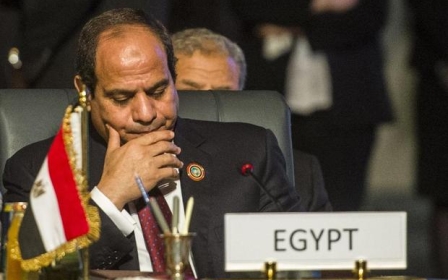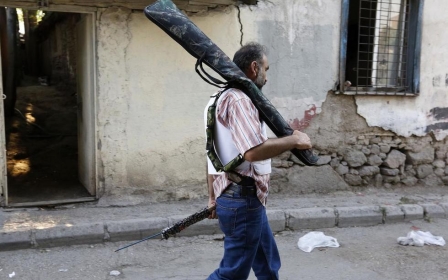The failure of political Islam?

In 1994, Harvard University Press published the English edition of a book by the eminent French political scientist Olivier Roy. The Failure of Political Islam had a powerful impact on policy-making circles, as well as among students of modern Islam and the Middle East, be they academics or think-tankers.
It was written in a specific context: the inability of the Afghan Mujahedeen to present an alternative to the defeated Communist regime in Kabul, and the turning of Afghanistan into a free range for war lords and drugs barons; the demise of the Algeria’s short-lived experiment with democracy and the suppression of the Islamic Salvation Front; the bloody, futile confrontation between the Egyptian security forces and the armed Islamists of Islamic Jihad and the Islamic Group. Roy was sure about his prediction: political Islam was doomed.
Today, questions about the future of political Islam have resurfaced. This time the context is different: the world stood by as a military coup brought down the first-ever freely-elected president in Egypt, who also happened to be a leading member of the Muslim Brothers, putting an end to the Egyptian transition to democracy. That was accompanied by a fall in the electoral fortunes of the Tunisian Islamist Nahdha party, and the quasi-legal methods through which the Jordanian government is trying to destroy the Jordanian Muslim Brothers.
As they were the biggest winners of the democratic revolutions that swept through the Arab world in 2011, it was little surprise that the Islamists were to become the biggest losers of the drastic disruption of the democratic change brought about by the counter-revolutionary forces. For many, their future as a credible political force is once again in doubt.
Roy’s book was published only a few years after the end of the Cold War. The triumph of the Atlantic West over the “evil empire” of the Soviet Union engendered unprecedented debate about whether this ultimate success represented the “end of history”.
Surprisingly that moment of triumphalism saw the rise of another kind of debate about where the next threat came from: Islam or China. Those who believed that Islam was the next enemy, that “Islam has always had bloody frontiers,” and that all Islamists were of one kind, viewed Roy’s thesis with ambivalence. On the other hand, the book was received with some degree of disillusion by those who believed that political Islam was a force for good, and was the only political force in the Middle East capable of challenging corrupt and totalitarian rulers.
In both cases, however, only rarely were attempts made to examine the foundations on which Roy’s conclusions were based by rigorous and critical analysis. Largely, the book was understood from the perspective of current politics and international affairs, and whether it had any direct implications to the making of policy towards the Muslim majority states, especially in the Middle East.
Yet, within a few years of its publication, Roy’s propositions were almost entirely forgotten. The Afghan post-communist civil war ended in 1996 with the astonishing rise of Taliban, who managed in two short years to bring about peace and temporarily unify the country; the Justice and Development Party (AKP), with its Islamic background, won a decisive majority in the Turkish parliamentary elections of 2002, only one single year after its founding; armed Islamists in Egypt unilaterally ended their war against the state, and the reformist Muslim Brothers were only stopped by wide-scale vote rigging from achieving an astounding victory in the 2005 parliamentary elections; and in the Palestinian occupied territories, despite the Arab and American support for its Fatah rival, Hamas came to win the legislative elections of 2006.
With the eruption of the Arab revolutions in 2011, it became widely clear that only the political Islamic forces were capable of standing up to the oppressive state machinery and its ruling class across the Arab world. So, where was the problem in the “failure” assessment of the mid-1990s, and where it is now?
The founding of al-Ikhwan al-Muslimun (the Muslim Brothers) in late 1920s Egypt, and their entry into the political arena a decade later, is commonly seen as the moment in which the Islamic political current first came into existence. Major events in the 1920s, such as the abolition of the Caliphate and the holding of a Christian missionary conference in Cairo, as well as the growing manifestations of social and cultural westernisation in Egypt, are usually seen as the principal causes behind the founding of the Muslim Brothers.
In other words, the Ikhwan is understood in terms of the identity politics and the deepening feelings among Muslims of the early 20th century that “Islam is under threat”. The truth, of course, is that important as they were, these causes are related to a specific and transitory Egyptian context and cannot explain the fast-spreading of the Islamic political current into various parts of the Arab and Muslim worlds, and its ability to survive, and become even more influential, almost 90 years after its first appearance. There are certainly some other, much deeper and long-lasting causes that lie behind the emergence of political Islam.
Almost a century after the beginning of the modernisation in the Muslim world, in the 1840s, both state and society were subjected to an unprecedented process of change. The emergence of the modern, centralised and pervasive state had a drastic impact on the relationship between state and society in the Muslim countries. In the pre-modernisation system, neither reformers nor reformist projects required the holding of state power to advance their vision, for the power of the traditional state was largely limited.
In the new system, the maximisation of state power, where the state came to control the entire public space and intrude into the private one, was subsequently to lead to the maximisation of conflict over the state. Furthermore, since the modern state in the Muslim countries, in terms of its structure, legal framework and values, was inspired by its original model in Western Europe, the new state was seen as an alien entity by its people; the gulf separating the state’s values and laws from the societal inherited values kept widening, and the state’s discourse was rarely understood by the people.
What exacerbated the Muslim crisis was the exclusion of Islam from the public space, for the modern system of life and governance were based from the very beginning on the assumption that religion had no role to play in the modern life. And despite the widespread tension engendered by the process of modernisation in the Muslim world, Muslim societies have not yet found a credible answer to the question of Islam’s role and position in their life.
In other words, political Islam is essentially a historical development, closely related to the highly complex context of the rising power of the state, its alienation from society, and the persistent question of the position and role of religion in the public space. The future and fate of political Islam is, and will continue to be, connected with these grand issues of modern Muslim societies, and not necessarily with the current and rapidly changing political situation.
- Dr Basheer Musa Nafi is a historian studying Islamic and Middle Eastern History.
The views expressed in this article belong to the author and do not necessarily reflect the editorial policy of Middle East Eye.
Photo: Muslims praticing their prayers (AFP)
New MEE newsletter: Jerusalem Dispatch
Sign up to get the latest insights and analysis on Israel-Palestine, alongside Turkey Unpacked and other MEE newsletters
Middle East Eye delivers independent and unrivalled coverage and analysis of the Middle East, North Africa and beyond. To learn more about republishing this content and the associated fees, please fill out this form. More about MEE can be found here.





